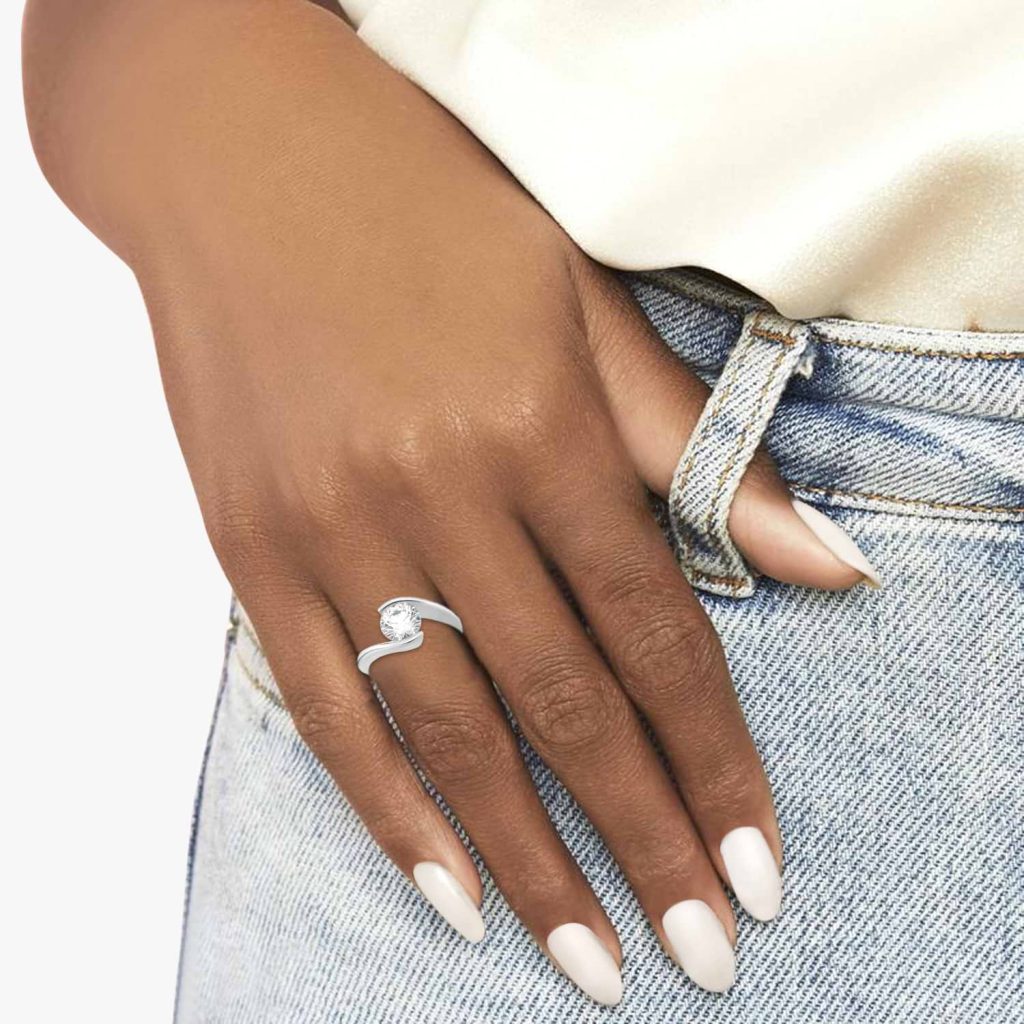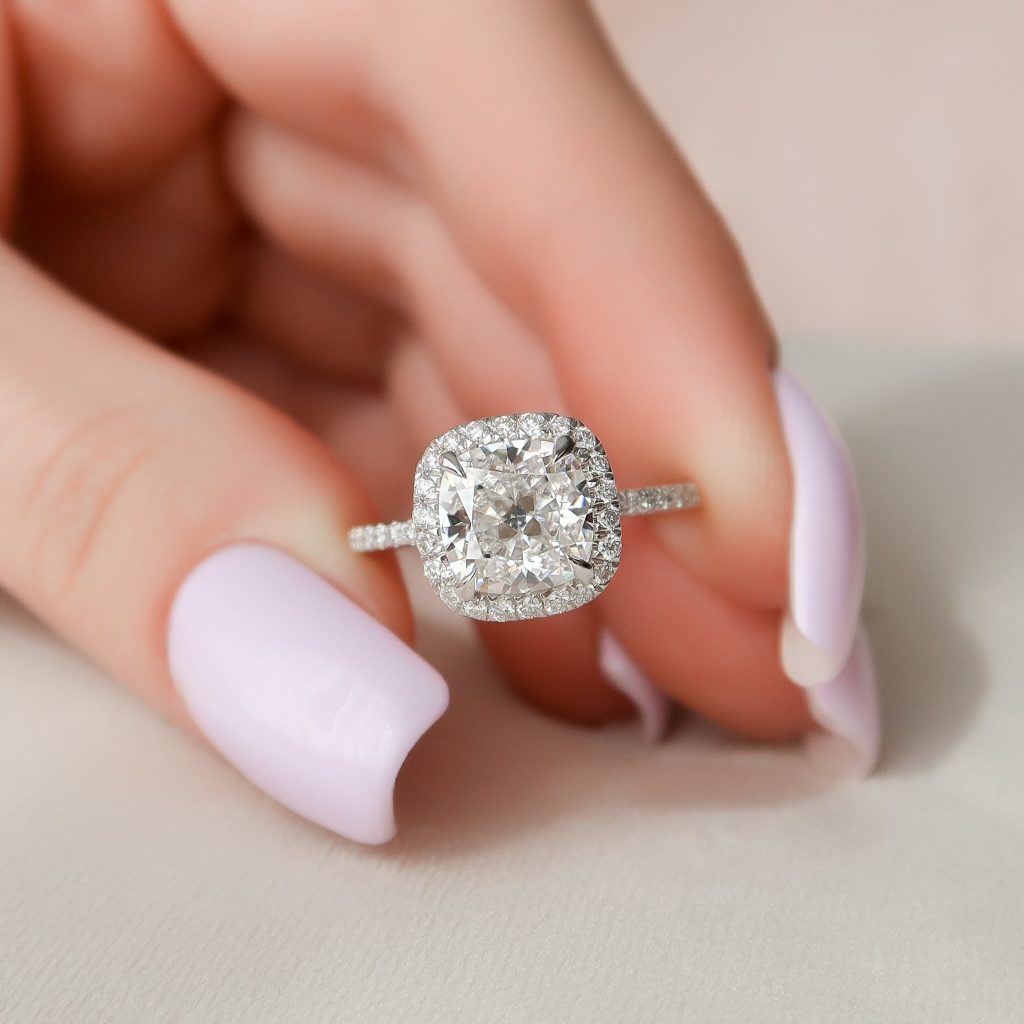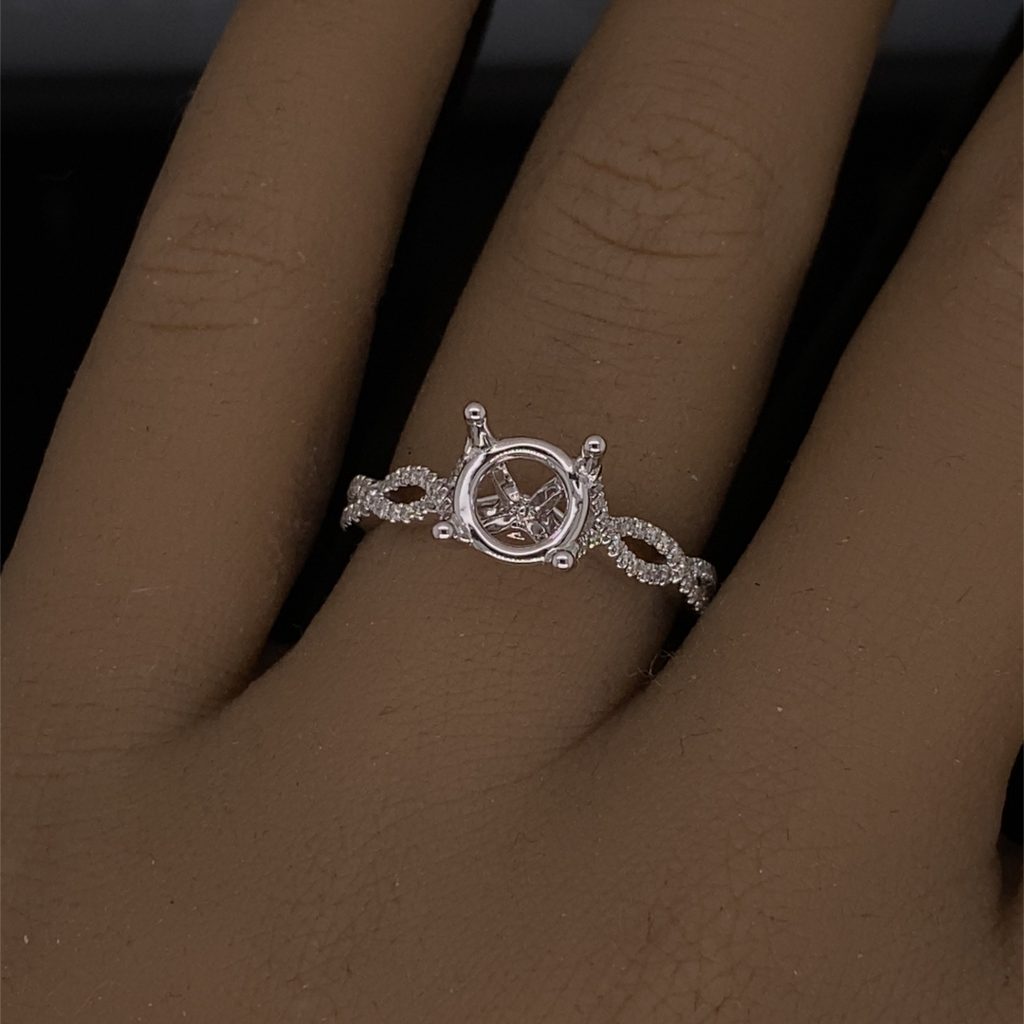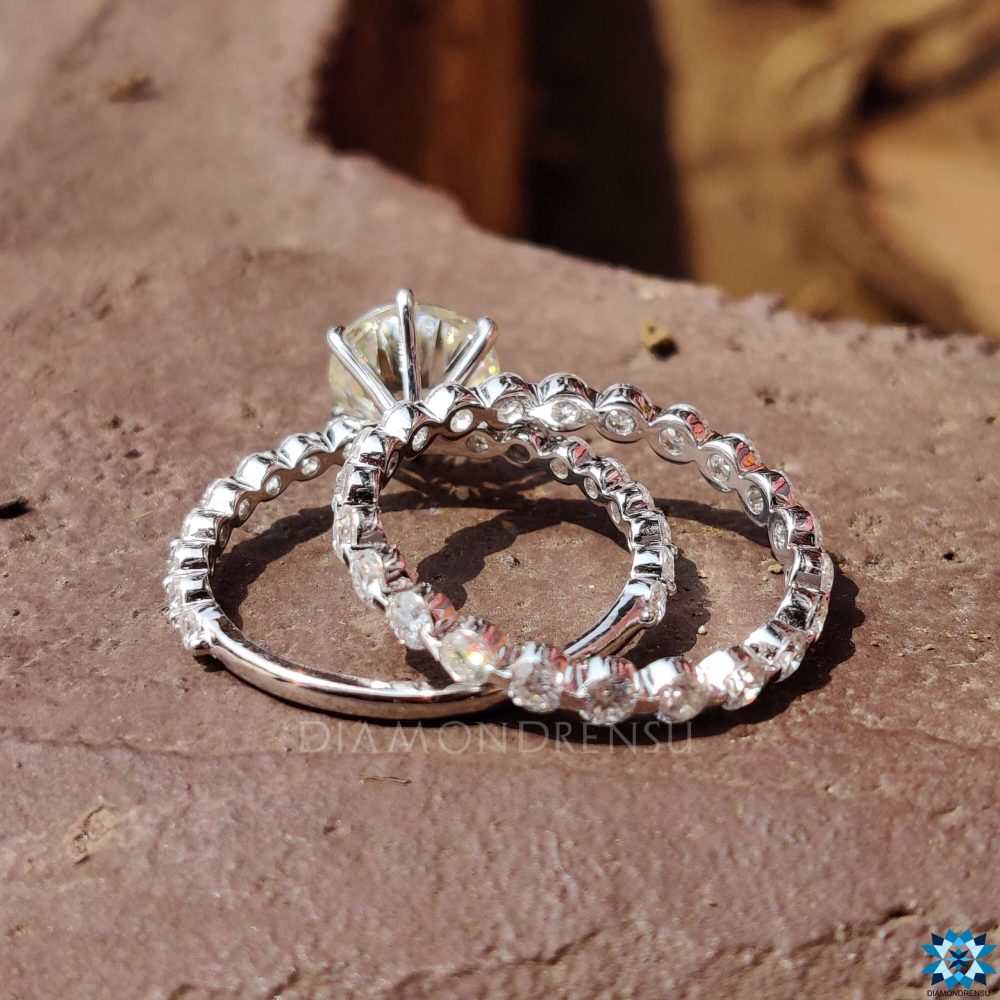Introduction
A dazzling diamond ring is more than just a symbol of love and commitment; it’s a wearable work of art that encapsulates personal style and sentiment. At the heart of every exquisite piece lies the ring setting, a crucial element that not only showcases the beauty of the gemstone but also ensures its security. This comprehensive guide delves into the intricate world of ring settings, exploring various designs, their influence on aesthetics, and the vital role they play in safeguarding your precious stones.

Understanding Ring Settings
A ring setting refers to the structural design that holds the diamond or other gemstones in place on a piece of jewelry. It encompasses the metal framework, prongs, bezels, channels, or any other elements that physically secure the stone to the band. The choice of setting significantly impacts the ring’s appearance, comfort, and durability.
Popular Ring Setting Styles
Prong Setting
Perhaps the most classic and widely recognized setting, the prong setting uses metal claws or prongs to grip the diamond, elevating it above the band to maximize light reflection and brilliance. This style offers an unobstructed view of the gemstone but may require more frequent maintenance due to potential prong wear.
Bezel Setting
In a bezel setting, a thin metal strip surrounds the circumference of the diamond, providing a sleek, modern look and excellent protection. Ideal for active lifestyles, bezel settings are secure and less prone to snagging, but they can cover more of the diamond’s surface.
Channel Setting
Commonly used for side stones or in eternity bands, channel settings feature diamonds nestled between two parallel metal strips, creating a seamless line of sparkle. This setting is both elegant and secure, preventing stones from coming loose.
Pavé Setting
Pronounced “pa-vay,” this style involves setting numerous small diamonds closely together, secured with minuscule beads or prongs. It creates a stunning, shimmering effect across the band, enhancing the ring’s overall brilliance.
Tension Setting
A modern marvel, the tension setting utilizes the band’s inner tension to suspend the diamond, giving the illusion that it’s floating. This contemporary design demands precision craftsmanship for both aesthetics and safety.
Factors to Consider
- Security: Some settings like bezel offer higher security compared to prong, which requires regular checks to ensure prongs are intact.
- Style: The setting should complement the wearer’s taste and lifestyle. A minimalist might prefer a bezel setting, while a lover of vintage styles might lean towards milgrain detailing or pavé accents.
- Maintenance: Prong and pavé settings might require more frequent cleaning and prong checking, while bezel settings are relatively low-maintenance.
- Diamond Size & Shape: Certain settings enhance specific diamond shapes better. For example, a solitaire prong setting beautifully showcases a round brilliant diamond.
Choosing the Right Metal
The choice of metal—such as platinum, white gold, yellow gold, or rose gold—can also impact the ring’s appearance and durability. Platinum is known for its durability and hypoallergenic properties, while gold comes in various hues to match personal preference.
Customization & Personal Touches
Many jewelers offer customization options, allowing you to personalize your ring setting with engravings, mixed metals, or custom-designed elements. This adds a unique touch, making the ring a true reflection of your story.

Understanding Ring Settings
Prong Settings:
- Description: Prong settings are among the most popular choices for diamond rings. They involve small metal claws (typically four or six) that hold the diamond in place.
- Advantages: Prong settings allow maximum exposure of the diamond, enhancing its brilliance and sparkle. They are versatile and can be adapted to hold diamonds of various shapes.
- Considerations: While prongs provide excellent visibility, they may expose the diamond to more potential damage if not crafted and maintained properly.
Bezel Settings:
- Description: In a bezel setting, the diamond is surrounded by a thin metal rim that secures it in place. This setting can fully or partially encircle the diamond.
- Advantages: Bezel settings offer superior protection to the diamond as it is securely nestled within the metal rim. They are ideal for individuals with active lifestyles.
- Considerations: The metal rim can slightly reduce the diamond’s visibility compared to prong settings, but it provides added security against accidental knocks.
Eave Settings:
- Description: Pave settings feature small diamonds set closely together, held in place by tiny beads or prongs. This creates a surface that appears to be “paved” with diamonds.
- Advantages: Pave settings enhance the overall brilliance of the ring by adding extra sparkle from multiple diamonds. They can complement a center stone or create a dazzling band.
- Considerations: Due to the intricate setting, pave rings may require more care and maintenance to ensure the smaller diamonds remain securely in place.
Channel Settings:
- Description: Channel settings involve diamonds set within a channel of metal along the band of the ring, without prongs or beads holding them individually.
- Advantages: Channel settings provide a sleek and modern look while securely holding diamonds in place. They offer a smooth, uninterrupted surface.
- Considerations: Resizing a ring with channel-set diamonds can be challenging due to the continuous setting along the band. Ensure proper sizing from the start.
Tension Settings:
- Description: Tension settings use pressure to hold the diamond in place between two ends of the ring’s metal band. The diamond appears to float within the setting.
- Advantages: Tension settings showcase the diamond with minimal metal interference, allowing maximum light exposure for brilliance. They offer a contemporary and unique look.
- Considerations: Precise craftsmanship is crucial for tension settings to ensure the diamond remains securely held without risking damage.
Factors Influencing Your Choice
- Diamond Shape: Different settings are suited to different diamond shapes. For instance, a round diamond may look stunning in a prong setting, while an emerald-cut diamond might be better showcased in a bezel setting.
- Lifestyle: Consider your daily activities and how they might impact your ring. If you lead an active lifestyle, a bezel or channel setting might offer more protection to the diamond than a prong setting.
- Aesthetic Preferences: Your personal style and the overall look you want to achieve with your ring will also influence your choice of setting. Some settings emphasize sparkle and brilliance, while others focus on a sleek, modern appearance.
Maintenance and Care Tips
- Regular Inspections: Schedule regular inspections with a jeweler to ensure the setting is secure and the diamond is well-maintained.
- Cleaning: Clean your ring regularly to remove dirt and debris that can accumulate around the setting and affect the diamond’s brilliance.
- Professional Maintenance: If you notice any looseness in the setting or damage to the metal, seek professional repair immediately to prevent further issues.

Sustainability and Ethics
As consumers become more conscious of environmental and ethical implications, choosing responsibly sourced materials and conflict-free diamonds is increasingly important. Look for certifications like the Kimberley Process Certification Scheme for diamonds and Fairmined gold to ensure your ring aligns with your values.
Maintenance and Care
Regular maintenance is crucial to keeping your ring looking its best and ensuring the longevity of the setting.
- Professional Cleaning: Schedule annual professional cleanings to remove accumulated dirt and grime that can dull the diamond’s shine.
- At-home Care: Gentle washing with warm water, mild soap, and a soft-bristled brush can help maintain the ring’s cleanliness between professional cleanings.
- Inspection: Periodically have a jeweler inspect the setting to check for loose prongs or signs of wear, especially if you’ve knocked or bumped your ring.
The Emotional Aspect
Ultimately, the ring setting you choose becomes a part of your personal narrative. It’s a physical representation of love, commitment, and personal style. Whether you opt for a classic, timeless design or a contemporary, avant-garde setting, remember that the emotional connection and meaning behind the ring are just as important as its outward appearance.
Conclusion
Selecting the perfect ring setting is a blend of practical considerations and personal style. Understanding the impact of each setting on the diamond’s display, security, and maintenance requirements is key to finding a ring that not only looks stunning but also stands the test of time. Whether you’re drawn to the classic elegance of a prong setting or the modern flair of a tension setting, your choice will ultimately contribute to the overall beauty and meaning of this cherished piece.
